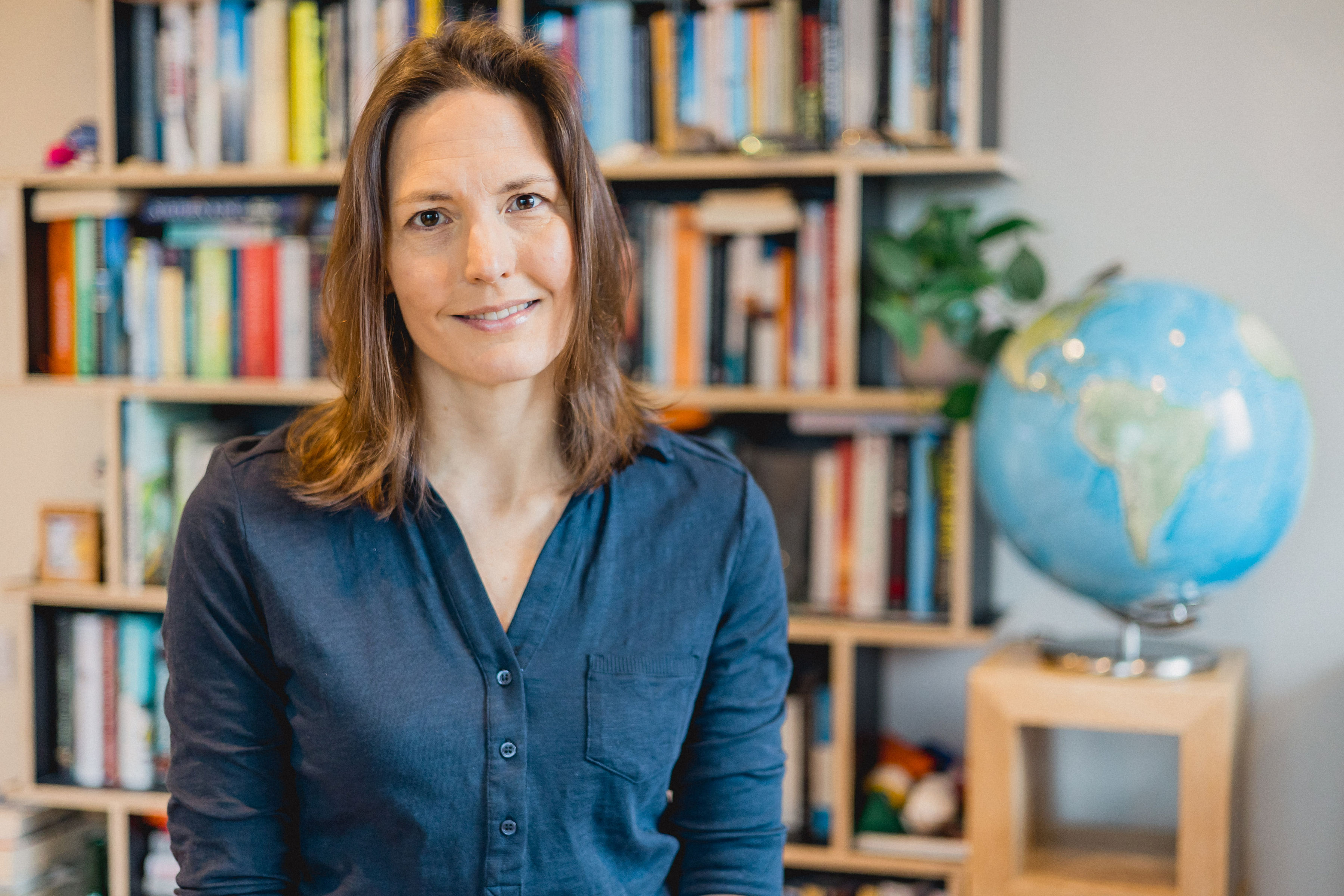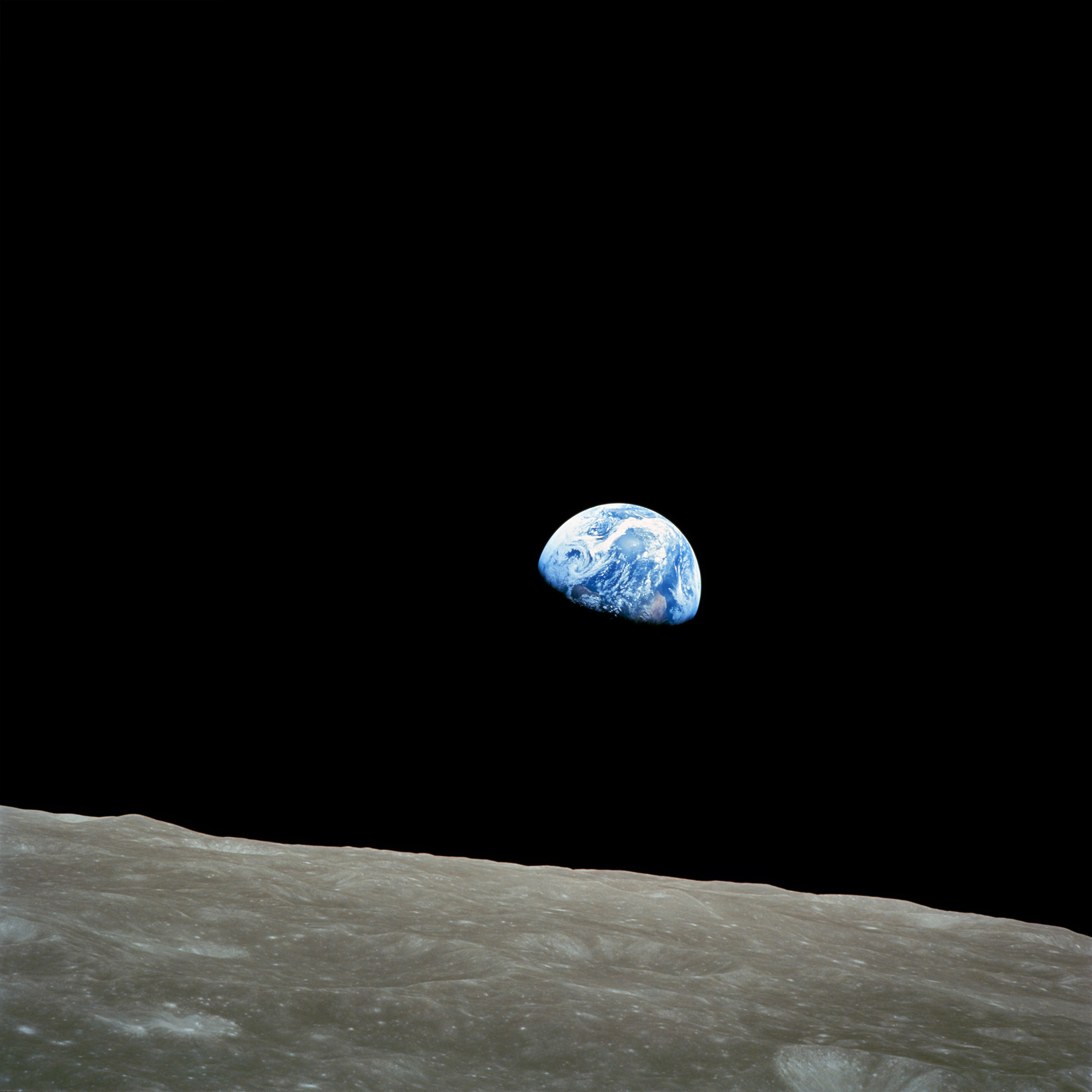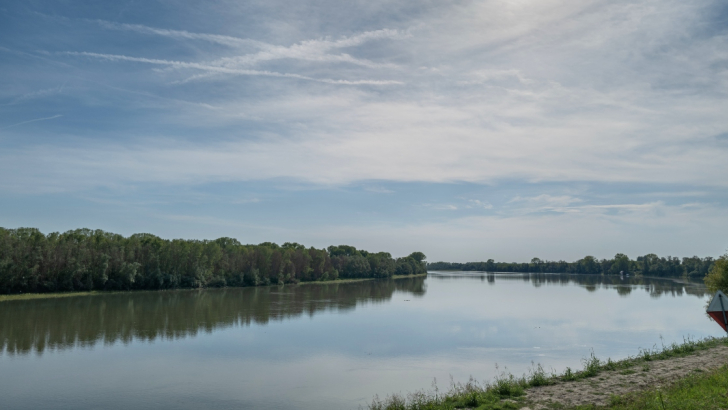
Starting with a canoe at dawn off the coast of Maui in the Hawaiian Islands, Helen Czerski’s latest book Blue Machine: How the Ocean Shapes Our World (2023) immediately reveals the author’s boundless love for the sea from the very first lines. She is a British physicist and oceanographer, as well as a brilliant science communicator, teaching in the Department of Mechanical Engineering at University College London. Here, she researches the air bubbles that form beneath waves in open water to understand (among other things) their effects on climate and global warming. Beyond her scientific credentials, the researcher is also a well-known presenter of television programs on physics, oceanography, and climatology for the BBC.
Additionally, Czerski frequently writes for various international magazines on topics such as climate change and environmental sustainability. And she is also the author of books like Storm in a Teacup: The Physics of Everyday Life (2016), in which she explores the laws of physics using common objects to explain natural phenomena like earthquakes and gas interactions. This book won the Italian Asimov Prize for popular science publishing in 2018, demonstrating not only the quality of her work but also its impact in making science more accessible to a broad audience.
Returning to Czerski’s latest editorial effort, Blue Machine delves into the role of the ocean in shaping our world, poetically intertwining physics and marine biology, history, and science. In its pages, the author seeks to raise awareness among readers about the importance of scientific research in understanding and protecting the environment, using an engaging narrative that stimulates curiosity. This work recently won the Wainwright Prize for “writing on conservation”, merging concerns related to climate change with a captivating exploration of the ocean, drawing on the author’s years of experience and her many travels across the world’s seas. And from here we start our interview with her.
In your latest book, you often talk about the Polynesian peoples and their relationship with the ocean: what can we learn from their ancient knowledge that was at risk of being lost?
«There are many indigenous cultures with a variety of attitudes towards the ocean. But one particularly important attitude from the Polynesian culture is that the ocean is something to work with, rather than to treat as a nasty monster that we have to fight. Polynesia consists of many tiny islands spread out across thousands of kilometres of ocean, and they were and are expert navigators, able to travel between the islands. That involves watching and learning from the ocean - sometimes the pattern of ocean waves can tell you which direction is south or whether you’re getting close to an island - but also working *with* the ocean and not against it. Western civilisations now take it for granted that a ship with an engine lets you go in any direction that you like, but it costs us a lot of energy and materials to go somewhere if we have to fight against nature on the way. The ocean engine is big and powerful, and it’s much more sensible to work with it, to use the ocean to help you go somewhere. That’s what Polynesian people do - they have respect for the ocean, and they observe it closely, and then they plan what they’re doing so the ocean helps them do what they want to do. Sometimes that involves waiting, or taking a slightly different route, but it’s far more efficient and low-impact.»

Helen Czerski (foto di Emma Gibson, 2023)
As a physicist and oceanographer, how do you think scientific research can contribute to addressing the environmental challenges and climate crisis we are currently facing?
«Scientific research can make a major contribution in three ways. The first one is to understand what’s happening and why it matters. We experience weather, that happens in days or weeks, but we really need science to look at the patterns across the whole globe and to understand the planetary mechanisms that drive those changes. The second way is to identify and test effective action for the future - we need science to make wind turbines and solar panels work, and we also need science to understand when and where those new technologies can be effectively employed. The third way is the one that we talk about the least, which is that scientific knowledge feeds into our mental framework for what the world is and how we fit into it. A lot of this is about how we see ourselves - traditionally, humans have seen themselves as above nature and separate to it, but science tells us that we are a part of the Earth system and not separate. We need to change our worldview to reflect that understanding, and we need science to help us understand what our worldview should be. This matters, because our behaviour is driven by emotion as well as logic, and our personal understanding of what and who we are makes a big difference to how we behave. We need to know that we are citizens of this planet, and part of it, to make effective long-term decisions.»
You have studied bubble physics extensively: how did you become passionate about this topic? And what impact do these “ephemeral subjects” have on ocean dynamics and our environment in general?
«I became a bubble physicist by accident. I studied physics and I liked experimental physics - the challenge of building experiments to see what nature is really doing and understand how the world works. I was very interested in things that could be right and front of you, but are still too fast and/or too small to see directly. I learned to build experiments to look at those small fast physical phenomena in order to study explosives, but I was never really interested in the explosives. When I finished my PhD, I looked for another topic that needed the physics of the small and fast, and that took me to bubbles. When waves break on the ocean surface and bubbles are formed, the situation is really complicated and we don’t understand it very well. So those bubbles were my gateway to the ocean.
Underwater bubbles matter because they’re a gas and a liquid that are very close together but not mixing. The gas stays inside the bubbles and the liquid stays outside the bubbles, but the mixture of the two makes things possible that neither the liquid or gas will do on its own. So for example, gas inside bubbles is easy to squash, and so water with lots of gas bubbles in it is effectively “squishy”. That makes a big difference to how sound travels through that water. But the biggest difference that ocean bubbles make to our planet is that they help gases to cross the ocean surface. Gases like oxygen and carbon dioxide are going from the atmosphere to the ocean and back again all the time, but the speed at which it happens depends on what the ocean surface is doing. If the ocean surface is flat and calm, that transfer is slow, but in a big storm, with lots of bubbles and turbulence, the transfer is much faster. So the presence of bubbles helps the ocean breathe. And it’s really important for our understanding of our world that we can track that breathing.»
In your experience as a science communicator, which topics have you noticed resonate most with the public, and which themes have you encountered more resistance to?
«Fundamentally, people are interested in stories. If it’s a good story, and especially if it’s a story about something they’ve already heard about, they are interested. But they also like explanations for things that they see around them every day - everyone loves that moment where they learn something new and then see the world around them in a different way. So really, we’re interested in novelty and stories, and you can find those for any topic. There is a lot more interest now in how the planet works - that change is really noticeable. People are realising that there is something to know about the ocean that isn’t just about the fish, and that there’s something to know about the atmosphere that isn’t just the clouds, and they are interested.
Usually it’s not the topic that makes people resist - it’s that you say or imply something that makes them feel stupid or threatened (or that something they like in their daily life is threatened). No-one likes either of those things. One thing I try to do in my work is to explain things with some components that people can test for themselves. For example, in my first book I wrote about how you can tell the difference between a cooked egg and a raw egg while they’re still in their shell. The same physics explains lots of big important things (like how satellites know which way round they are), so the basic concept really matters. But everyone can try the egg experiment for themselves, so they don’t just have to believe me. People love something like that, and then they’re interested in the idea, rather than immediately threatened by it.»
And perhaps this is exactly how we could summarize Helen Czerski’s communicative style: a skillful blend of passion and expertise, which through her broadcasts and books offers us a new perspective on what it means to be aware citizens of a fragile planet that is also the only one we have.






